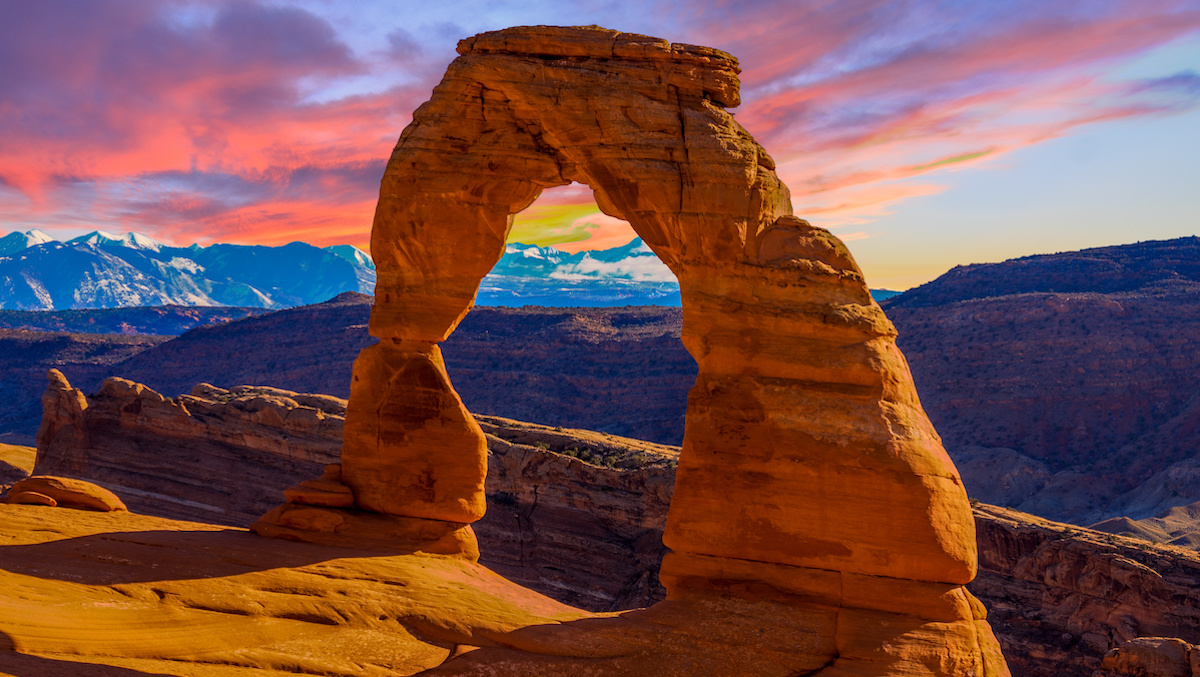Americans are beyond lucky to have their national parks. With 424 national park sites that span more than 84 million acres, we are afforded the priceless opportunity to experience the splendid natural beauty of this country.
That being said, nobody ever said these parks were safe. Preserving the natural wonders of North America means there are precautions visitors need to take, and not everyone always heeds those warnings.
Deaths do occur at national parks, and while the stats vary year to year, it’s not an insignificant amount. More than 200 people died at national parks in 2022. Of course, 311 million guests visited the parks last year alone, so it’s not some epidemic, but still, the risks are always there. And from 2014 through April 2023, more than 2,600 visitors died in the national parks. So while the number of deaths ebbs and flows each year, there’s no denying visitors need to stay aware of the dangers these parks present.
So how exactly are people dying at national parks? Let’s dig in.
Facts and Statistics on Deaths at National Parks
Motor Vehicle Crashes
Most Americans are pretty terrible at driving in general, so this checks out. Over an eight-year period spanning 2014 to 2021, there were 415 national park deaths attributed to motor vehicle crashes, which was second only to “undetermined” deaths, which led the pack at 449 fatalities.
Drowning
The prospect of drowning is a very real threat at many national parks, so it’s no surprise that it remains a leading cause of death. At parks like Zion, for instance, flash floods in the Narrows have led to the death of hikers, making it imperative to follow the park’s signs and understand the the threat. Drowning deaths can be due to any number of factors – unstable conditions, strong water currents, misjudging the depth of the water – but it often comes down to visitors simply underestimating the risks.
Falls
This one doesn’t come as much of a surprise, either; many of the paths and trails in a national park can be treacherous. Sometimes, a fall is just a tragic accident, as many hikers have slipped and fallen off cliffs and other steep trails. Other times, people fall off cliffs posing for the best Instagram-worthy photo.
Medical Events/Natural Deaths
Proper hydration is vital when hiking, especially in the more strenuous parks and those literally located in the desert. But people often like to push the limits of their capabilities, and nature can be a cruel, unforgiving monster. The number of medical-related deaths that occur in national parks is humbling, but yet another reminder to listen to your body and, at the very least, stay hydrated at all times.
Other Types of Deaths at National Parks
There are a number of other ways people occasionally die in the national parks – you’ve got your standard-issue rock falls, landslides, etc. – but there are other deaths that are a bit more newsworthy. For instance, you’ve got people who fall into one of the infamous Yellowstone thermal pools and are literally being dissolved in acid.
There is also the occasional story of someone having an unfortunate run-in with wildlife. Back in 2020, a hunter was killed in Alaska while on a moose-hunting trip. National park deaths from animals are rare, but that doesn’t mean you should test fate by, oh, I don’t know, taking a selfie with a bison.
To keep the grim news coming, suicides do happen at the national parks as well. In fact, the New River Gorge National River, Natchez Trace Parkway, and Blue Ridge Parkway feature a disproportionately high number of suicides, due in part to the high bridges these national parks feature.
What Are the Deadliest National Parks?
While saying any national park is “deadly” is certainly overstating the frequency with which these things happen, there are certainly parks that are more dangerous than others. And as you might expect, some of the most-visited parks have the highest numbers of fatalities.
That being said, here are the five deadliest national parks from 2014 to 2021 (the total number of deaths and the leading cause of death are in parentheses):
- Lake Mead National Recreation Area (145 deaths – 47 from drowning)
- Grand Canyon National Park (97 deaths – 48 from medical events)
- Yosemite National Park (94 deaths – 33 from medical events)
- Great Smoky Mountains National Park (80 deaths – 29 from motor vehicle crashes)
- Natchez Trace Parkway (74 deaths – 62 from motor vehicle crashes)
If you’re looking for more recent data, here are the deadliest parks from 2022 (same thing goes for the data in parentheses):
- Lake Mead National Recreation Area (21 deaths – seven each from motor vehicle crashes and drownings)
- National Mall & Memorial Parks (Nine deaths – four from environmental factors)
- Great Smoky Mountains National Park (Nine deaths – two each from motor vehicle crashes and drownings)
- Baltimore-Washington Parkway (Nine deaths – seven from motor vehicle crashes)
- Yosemite National Park (Eight deaths – two from motor vehicle crashes)
So, all in all, here’s your takeaway: Get your affairs in order if you plan on visiting the Lake Mead Recreation Area.
How to Stay Safe in a National Park
All this being said, the National Park Service doesn’t leave visitors with a “you’re on your own mentality.” Opportunities for visitor education are abundant, and every park has ample warning signs, designated trails, and safety barriers to ensure guests are as protected as possible.
Ultimately, it’s on us to behave responsibly and be prepared for what a trip to a national park means, while always being aware of potential hazards. Dying isn’t some epidemic at national parks, but it’s not a guarantee you can’t get hurt. Taking just a few moments to be smart is all it takes from crashing your car into a moose or something.
